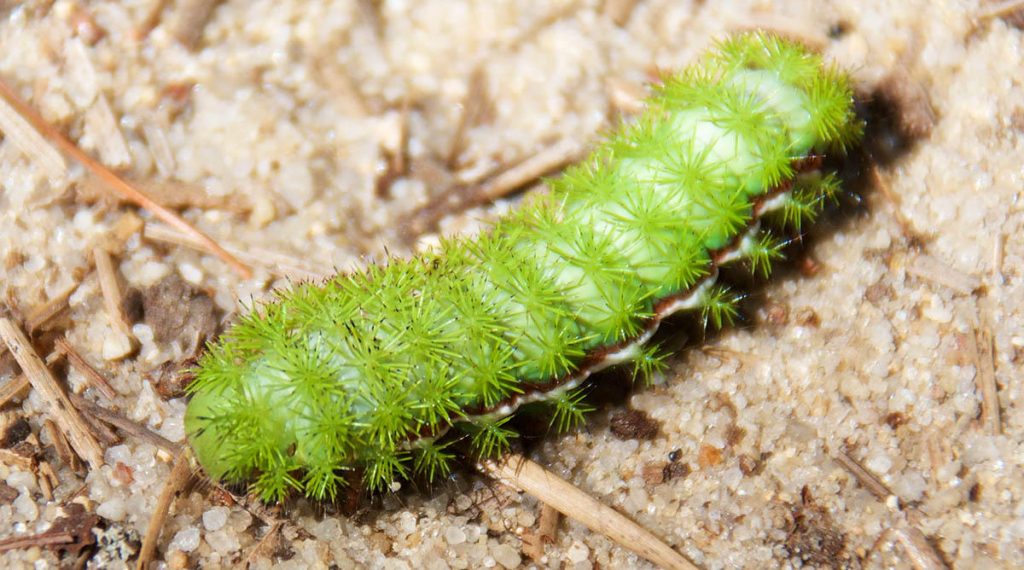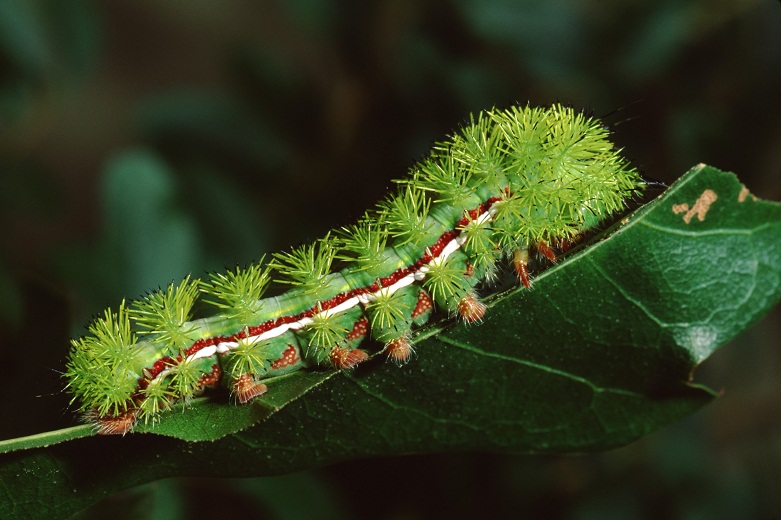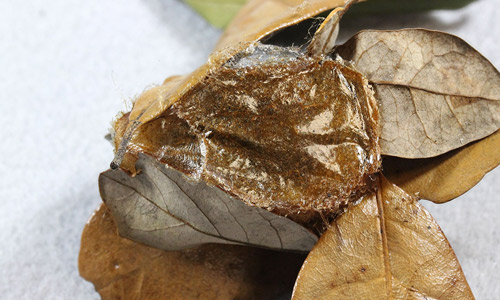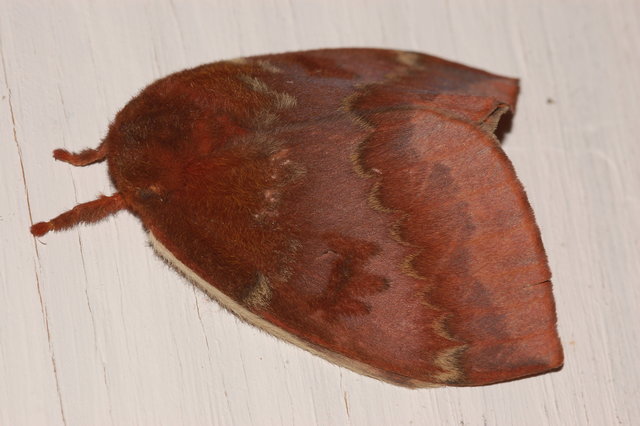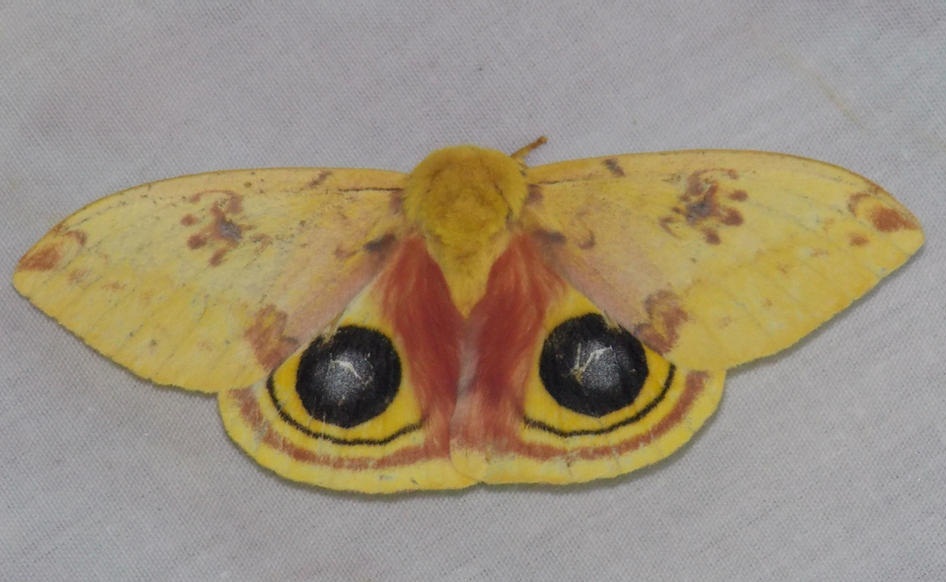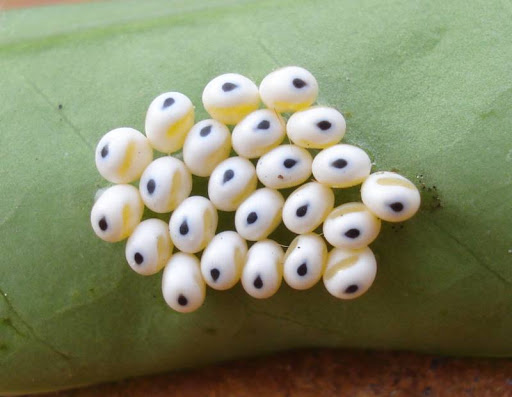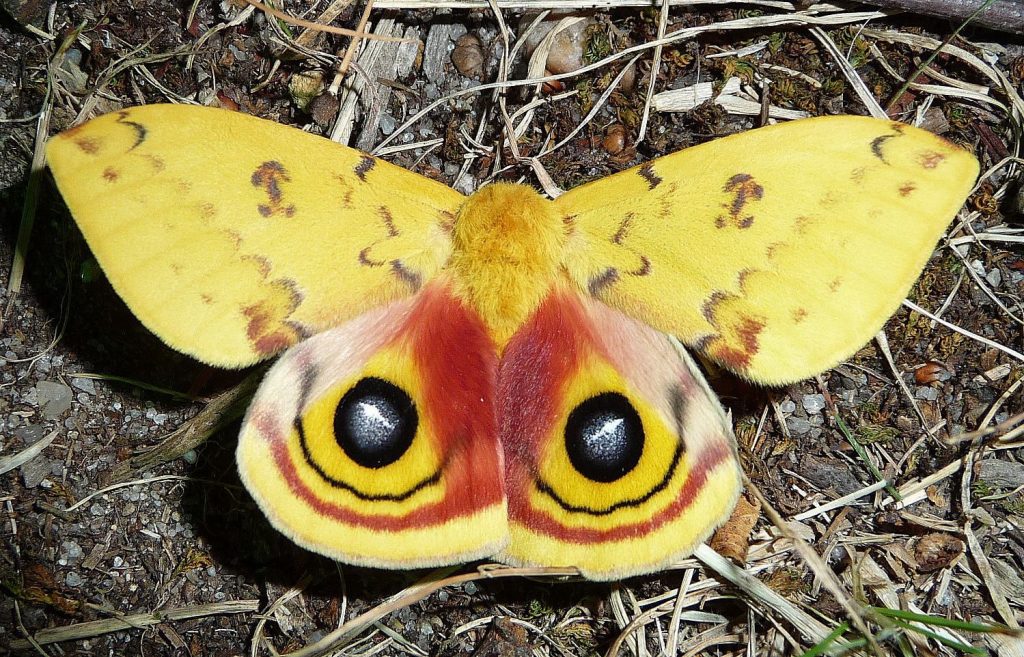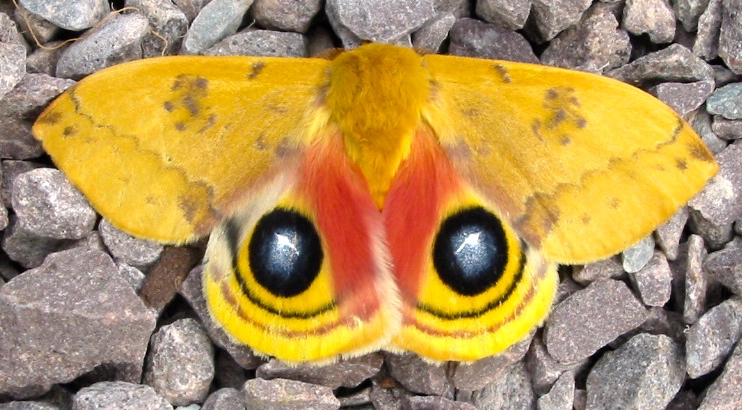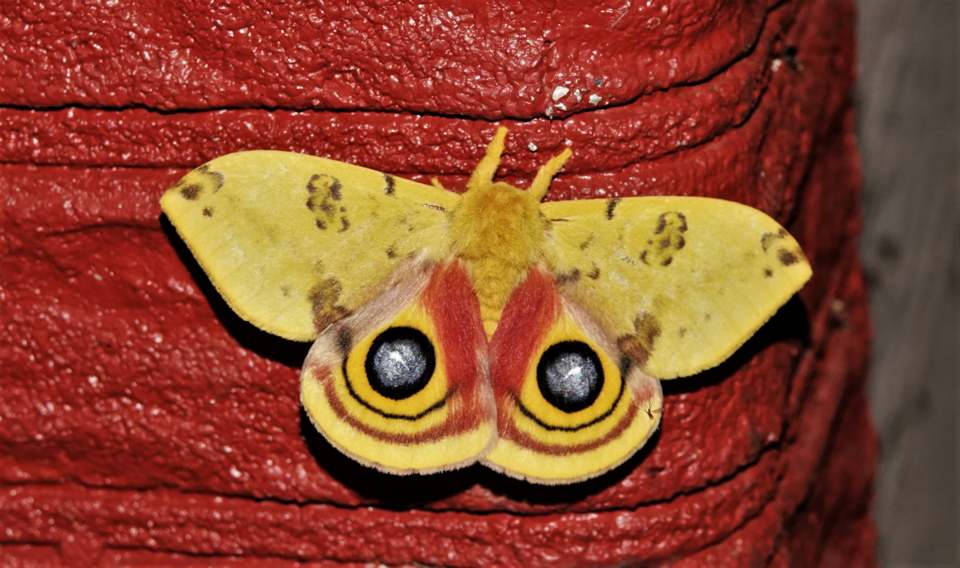Io Moth (Automeris io)
Io moth (pronounced as EYE-oh), indigenous to different parts of North America, is known for its colorful, appealing appearance. This unique species gets its name from Io, a priestess in Greek mythology, known to be one among Zues’ (thunder god) passionate mortal lover. The prominent blue eyespots at the center of its wings make it all the more striking.
bloximages.newyork1.vip.townnews.com
Scientific Classification
- Family: Saturniidae
- Genus: Automeris
- Scientific Name: Automeris io
Description and Identification
Caterpillar
Like most other moths of their family, this species also goes through five instars. They have a reddish-brown body with six light lines arranged longitudinally, alongside rows of spines during the first instar. Between the second and fourth instar, they become yellowish-brown with the lines getting more prominent and lighter.
The full-grown larvae are bright green in the final instar, having white and red lateral stripes on the abdomen’s top and bottom. At this point, they develop many urticating hairs with a spiny projection that could cause painful stings, equaling to a bee sting, with the pain lasting for several hours.
Pupa
When ready to pupate, the caterpillar spins a dark silken cocoon made within the leaf litter where the pupal phase begins. The pupae have a dark brown or black color with sexual dimorphism visible prominently. The females are larger than their male counterparts, having longitudinal indentations on the fourth and fifth segments of their abdomen. Such notches do not exist in the male pupae.
Adult Moth
Sexual Dimorphism: Present
Females appear larger than the male counterparts, the latter also having feather antennae.
Color and Appearance
Forewings:
Males – When opened, the wings appear bright yellow or orangish-brown with red bands on both the sides. When closed, the pattern and color remains the same.
The color of the forewings of the males varies according to the region they inhabit. The northern male moths have yellow forewings, while the coloration is a little darker in their southern counterparts.
Females – When opened, the wings are brown, red or brownish-purple. When closed, the color remains unchanged.
Hindwings: When opened, in both the sexes, the hindwings are yellow or brownish-orange with orange or yellow markings. The main attraction is the big bluish or blackish eyespot with a white dash at the center situated on each of the hindwings.
When closed: The color is the same, though the eyespots are not visible.
Average Wingspan: 6.5 – 8.8 cm
Flight Pattern: Consistent
Season: North – May to June; South – February to September
Quick Facts
| Distribution | Parts of North America including southeastern part of Manitoba, Quebec, Brunswick, Manitoba, Montana, Utah, Texas, North Dakota, South Dakota, and Florida |
| Habitat | Forest, scrublands, suburbs |
| Predators | Spiders, mammals, birds, and insects |
| Lifespan of Adults | 1 – 2 weeks |
| Host Plants | Willow, balsam fir, pin cherry, red maple, wild indigo, eastern redbud, sweet fern, ash, common hazel, beech, oak, peony, American sweetgum |
| Adult Diet | Do not eat due to their short lifespan, mostly surviving on food stored during the larval stage |
Did You Know
- Danish zoologist John Christian Fabricius described this species for the first time in 1775.
- These moths pose a ferocious appearance mostly due to their big eyespots sufficient to frighten predators, particularly when they sit in a head-down posture.
Scientific Classification
- Family: Saturniidae
- Genus: Automeris
- Scientific Name: Automeris io


